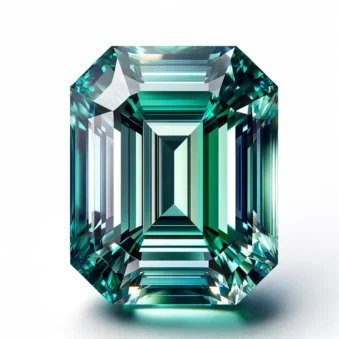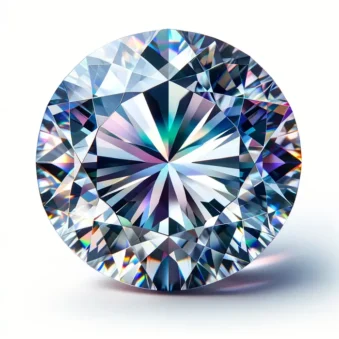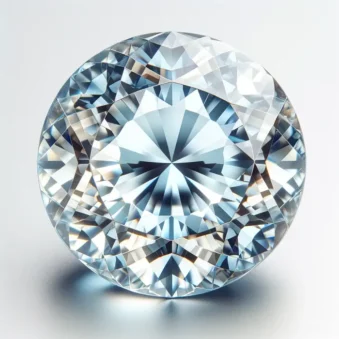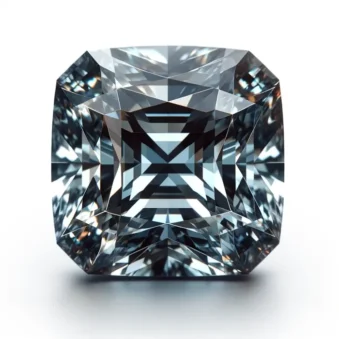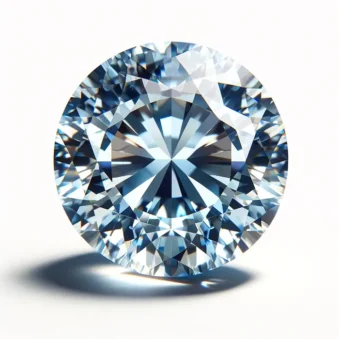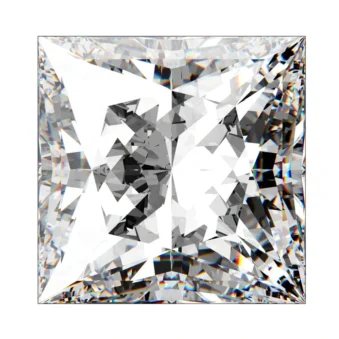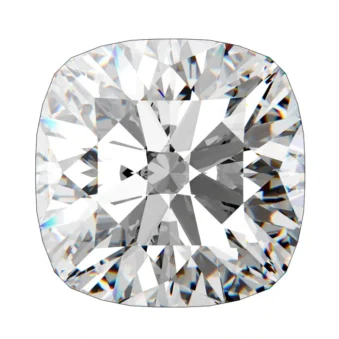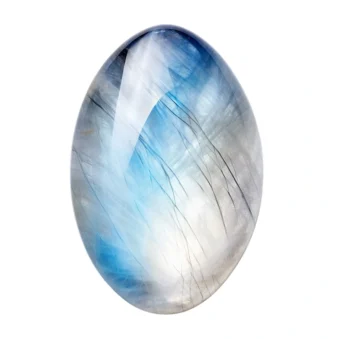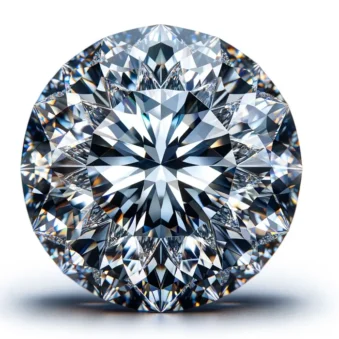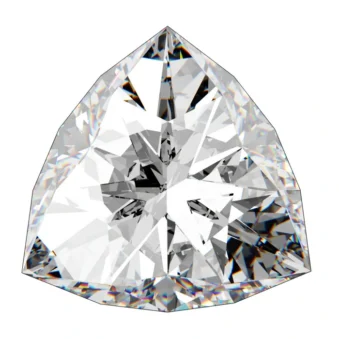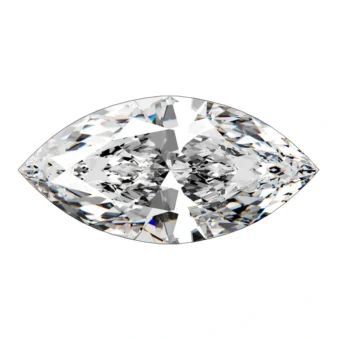- Your cart is empty
- Continue Shopping
The Art of Gemstone Cutting: How to Choose The Right Cutting Style for Your Gemstone
- custom made jewellery, diamonds, gemstone, General Knowledge
- Posted on
-
by Gillian's Jewellery
- 0 comments
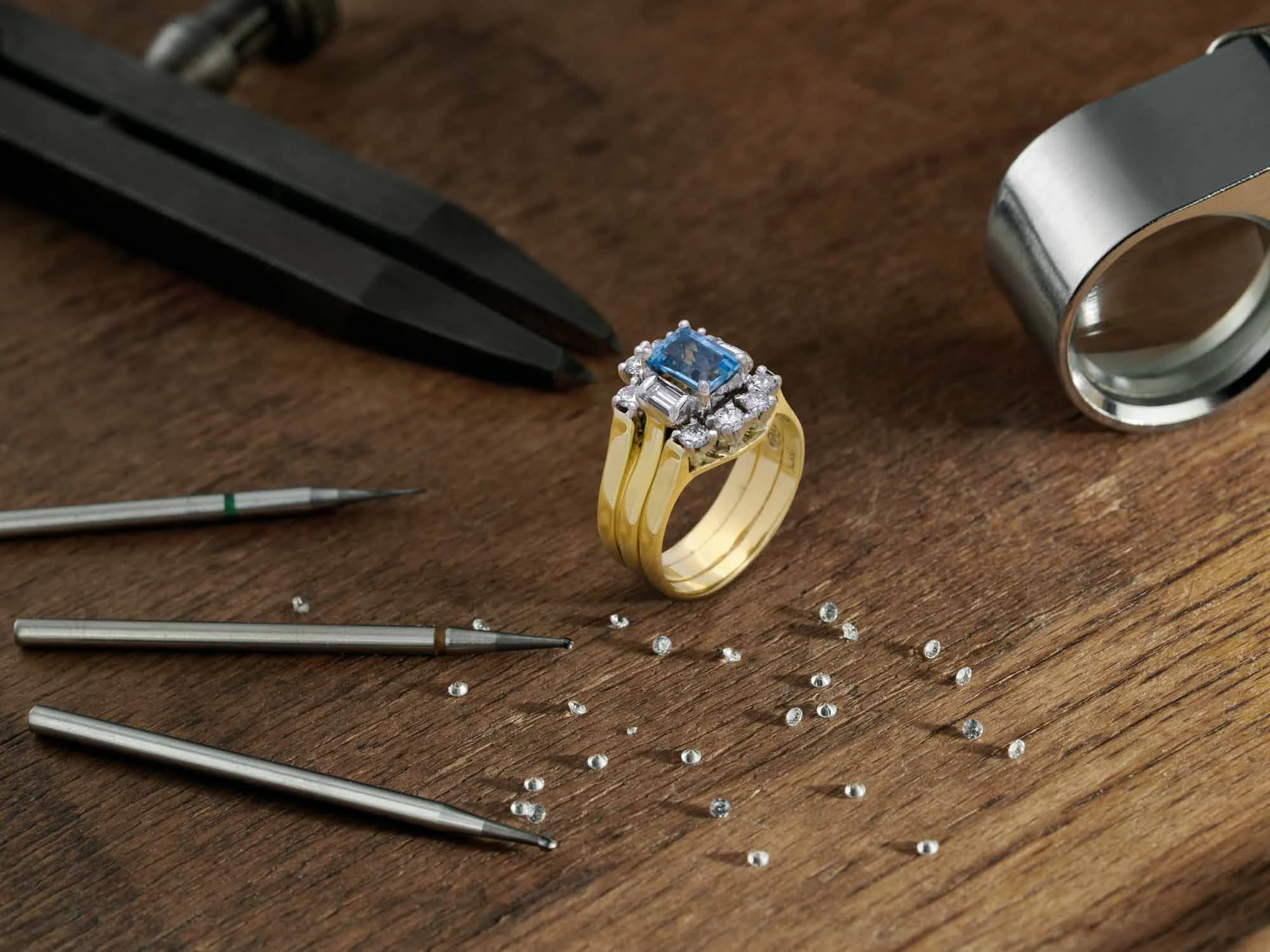
Gemstone cutting, an art that dates back thousands of years, remains at the heart of the jewellery industry, transforming raw, earth-crafted minerals into stunning jewels that captivate the eye and heart. This meticulous process, performed by skilled lapidarists, involves cutting and polishing stones to reveal their hidden beauty and brilliance. The journey from a rough gem to a sparkling masterpiece is complex and nuanced, relying on a deep understanding of the stone’s physical and chemical properties. Each cut is a delicate balance between the gem’s natural characteristics and the artisan’s vision, aiming to enhance the stone’s colour, clarity, and luminosity while minimising flaws. The importance of gemstone cutting extends beyond aesthetics; it is crucial for maximising the gemstone’s value and appeal, making it an indispensable element in the creation of fine jewellery.
The evolution of gemstone cutting reflects a blend of tradition, innovation, and artistry. From ancient techniques to modern precision cuts, the lapidary’s craft has continuously adapted to incorporate new technologies and styles while preserving the timeless allure of natural stones. The choice of cut is influenced by various factors, including the gemstone’s type, intended use, and the latest fashion trends. As such, gemstone cutting is more than a technical skill; it is a form of expression that contributes significantly to the design and overall impact of jewellery. In this context, understanding the intricacies of gemstone cutting not only enhances our appreciation of jewellery but also allows for a greater understanding of the cultural and historical significance of these precious stones.
Gemstone Cutting: Five Steps to a Perfect Cut
Firstly, let’s delve into the fascinating world of gemstone cutting, a meticulous process that transforms rough stones into dazzling beauties. Each step is crucial and requires precision and care.
Handling the Rough
Our journey starts with the rough gemstone, a hidden treasure waiting to reveal its beauty. The cutter must inspect the stone, assessing its size, shape, and potential flaws. This initial examination is vital, as it determines the stone’s future. The aim here is not just to uncover the gem’s potential but to envision the sparkling jewel it will become.
Planning the Cut
Next, we move on to planning, a stage where foresight meets creativity. The lapidarist decides on the gem’s final shape, considering how to best showcase its colour, minimise imperfections, and maximise size. This step is like mapping out a path, ensuring the journey will lead to the most luminous destination.
Pre-Shaping and Dopping
Now, it’s time for pre-shaping, where the rough stone begins to take form. The cutter shapes the gem against a spinning wheel, gradually revealing the outline of the future jewel. Then, the stone is attached to a dop stick, ensuring stability for the intricate work ahead. This is a pivotal moment, setting the stage for the precision and artistry that follows.
Faceting
The heart of the process, faceting, is where the true magic happens. The cutter grinds tiny, flat surfaces onto the stone, creating a symphony of angles and planes. Each facet must be carefully aligned to reflect light, enhancing the gem’s natural brilliance. This step requires patience and precision, as the cutter crafts a masterpiece of light and shadow.
Polishing
Finally, we reach the polishing stage, where the gem achieves its full splendour. Using finer abrasives, the cutter polishes each facet to a mirror-like finish, unlocking the stone’s radiant glow. This last step is a testament to the cutter’s skill and dedication, culminating in a gemstone that sparkles with life.
Gem Cutting Styles and Techniques
The 3 Basic Cuts
Brilliant Cut
The brilliant cut is perhaps the most popular style for diamonds and other transparent gems, renowned for its ability to maximise light return. With typically 58 facets, this cut is engineered to enhance the stone’s internal fire, brilliance, and scintillation. The geometry is designed to reflect the maximum amount of light, making the gem appear more luminous and vibrant. This cut is ideal for those who seek the ultimate sparkle in their jewellery, as it brings out the gem’s best qualities.
Step Cut
The step cut is a more understated and elegant approach to gemstone cutting, characterised by its clean, rectilinear or square facets that descend from the gem’s table like the steps of a staircase. This cut emphasises the clarity, colour, and lustrous materials of the gemstone rather than its sparkle. It is particularly favoured for stones like emeralds, where clarity is prized over brilliance. The step cut offers a different kind of beauty, one that is measured and serene, making it perfect for those who appreciate a more subtle sophistication in their jewellery.
Mixed Cut
The mixed cut combines elements of both the brilliant and step cuts to create a style that balances the sparkle of the brilliant facets with the depth and clarity of the step facets. This technique allows lapidarists to tailor the cut to the specific gemstone, enhancing its best features while minimising any imperfections. The mixed cut can offer the best of both worlds, providing depth and complexity to the appearance of the gem, making it an excellent choice for those who desire versatility and uniqueness in their jewellery.
Vintage Cuts
Rose Cut
The rose cut is a nod to the history of gemstone cutting, featuring a flat bottom and a domed top covered in triangular facets that resemble the petals of a rose. This cut maximises the perceived surface area of the gem, giving it a larger, more substantial appearance without the added weight. The rose cut is perfect for those who love vintage charm and want a piece of jewellery that reflects historical beauty and romanticism. Its subtle sparkle and unique profile make it a timeless choice for antique-inspired pieces.
Old Mine Cut
The old mine cut dates back to the 18th century and is considered the precursor to modern diamond cuts. Characterised by a squarish shape with rounded corners, it combines a high crown, a small table, and a large, flat culet, creating a distinctive, soft sparkle reminiscent of candlelight. This cut is ideal for those who are drawn to the allure and nostalgia of vintage jewellery, offering a connection to the past and a sense of enduring elegance.
Old European Cut
The old European cut is the forerunner of today’s modern round brilliant cut but with its own unique characteristics, such as a higher crown, smaller table, and more pronounced culet. This cut was widely used during the 19th and early 20th centuries and is cherished for its historical significance and romantic appeal. The old European cut is perfect for those who appreciate the craftsmanship and aesthetics of bygone eras, providing a bridge between traditional and contemporary styles.
Modern Innovations
Barion Cut
The Barion cut is a modern innovation that marries the brilliance of the standard round cut with the depth of the step cut, resulting in a captivating blend of light and shadow. This cut is known for its intricate faceting and exceptional light performance, making the gem appear both fiery and deep. It’s an excellent choice for those seeking a cut that combines traditional elegance with contemporary flair, offering a sophisticated and unique aesthetic.
Princess Cut
The princess cut is a modern classic, beloved for its sharp angles and contemporary lines. Introduced in the 1980s, this cut is second in popularity only to the round brilliant and is designed to maximise sparkle while maintaining a chic, square shape. The princess cut is perfect for those who seek a modern, fashionable look without sacrificing brilliance and fire. It’s well-suited to a variety of jewellery settings and styles, making it versatile and timeless.
Cushion Cut
The cushion cut, with its rounded corners and soft, pillow-like shape, combines the best features of old mine and modern cuts. This cut has been popular for over a century and is known for its ability to reflect light in a chunky, romantic pattern. The cushion cut is ideal for those who love the softness of vintage styles but want the performance of a modern cut, providing a luxurious and romantic feel to any piece of jewellery.
Cabochon Cut
Cabochon
The cabochon cut is one of the oldest and simplest cutting styles, characterised by a polished, smooth dome without facets. This cut highlights the natural beauty, colour, and texture of opaque or translucent gemstones, such as opals, moonstones, and turquoise. The absence of facets allows for a larger surface area, showcasing the stone’s intrinsic qualities and natural phenomena, such as star effects or cat’s eye. The cabochon cut is perfect for those who appreciate the organic, unadulterated beauty of gemstones, offering a timeless and classic appeal.
Named Cuts
Portuguese Cut
The Portuguese cut is renowned for its complexity and the sheer number of facets, often exceeding 100, which create a mesmerising pattern of reflected light. Originating from Portugal, this cut is designed to enhance the brilliance and depth of the gem, making it appear more luminous and vibrant. The intricate faceting requires exceptional skill, making each Portuguese cut gem a masterpiece of craftsmanship. This cut is perfect for those who desire an eye-catching piece that stands out with unparalleled sparkle and a rich, layered appearance.
Asscher Cut
Developed in 1902 by the Asscher brothers in the Netherlands, the Asscher cut is a variation of the square step cut with deep pavilion and high crown. Its unique structure is designed to draw the eye into the gem, highlighting its clarity and depth. The Asscher cut has gained popularity for its sophisticated, vintage appeal, offering a blend of timeless elegance and modern symmetry. It’s ideal for those who appreciate geometric shapes and a distinctive, almost architectural look in their jewellery.
Heart Cut
The heart cut is the ultimate symbol of love and romance, making it a popular choice for engagement rings and romantic gifts. This cut requires great precision to create the symmetrical lobes and sharp cleft that define the iconic heart shape. The complexity of the cut enhances the gem’s sparkle and colour, making it a captivating choice for those wanting to express their affection or commemorate a special moment. The heart cut is a testament to the cutter’s skill and passion, embodying both the emotional and physical beauty of the gemstone.
Trilliant Cut
Also known as trillion or trillian, the Trilliant cut is a spectacular variation of the more traditional cuts, typically triangular with rounded or pointed corners. This cut is designed to maximise the gem’s brilliance and fire, making it an excellent option for those seeking a modern, edgy look. The Trilliant cut is versatile, serving as a stunning centrepiece or a complementary side stone, and is perfect for individuals who favour bold, contemporary designs that make a statement.
Other Common Styles
Marquise Cut
With its elongated shape and pointed ends, the Marquise cut is designed to maximise carat weight, giving the illusion of a larger, more opulent gem. Originating from the French royal court, this cut is steeped in history and elegance, ideal for those who seek a touch of aristocratic charm. The Marquise cut’s unique geometry also helps elongate the finger, making it a flattering choice for engagement rings and other statement pieces.
Pear Cut
Combining the best of the round and Marquise cuts, the Pear cut, also known as the teardrop, is distinguished by its single point and rounded end. This cut offers a delicate balance of elegance and whimsy, making it a versatile choice for a variety of jewellery settings. The Pear cut is particularly favoured for its ability to create an illusion of length and slimness, ideal for pendants and earrings as well as beautiful, unique engagement rings.
Baguette Cut
Named after the French word for “little rod,” the Baguette cut is a relatively simple yet elegant style, typically rectangular with step facets. This cut emphasises a diamond’s lustre, clarity, and icy appeal rather than its sparkle. The Baguette cut is perfect for those who prefer understated elegance and clean lines, making it an excellent choice for modern, minimalist designs or as side stones that complement a larger central gem.
What’s Next
In this comprehensive exploration of gemstone cutting, we’ve delved into the intricate art and science behind transforming raw stones into breathtaking jewels. From the traditional brilliance of The 3 Basic Cuts to the historical allure of Vintage Cuts, and from the innovative sparkle of Modern Innovations to the unique charm of Named Cuts and Other Common Styles, each technique and style plays a pivotal role in the world of jewellery, crafting pieces that capture hearts and stand the test of time.
This article serves as the first in a series dedicated to the fascinating world of gemstone cutting. We’ve only scratched the surface of this intricate craft. In our next piece, we will continue our journey, exploring additional aspects that influence the final beauty and value of gemstones, including the Factors Influencing the Choice of Cut and The Role of Gem Cutting in Jewellery Design.
More Questions around Gemstone Cutting?
Whether you’re a seasoned jewellery enthusiast or a curious newcomer, understanding the nuances of gemstone cutting can enhance your appreciation of jewellery and inform your choices in personal adornments or gifts. Stay tuned for our next article, where we will uncover more secrets behind the stunning transformations from stone to jewel.
If you’ve found this exploration enlightening and can’t wait to learn more, or if you’re seeking the perfect gemstone piece crafted with unparalleled skill, don’t hesitate to reach out or explore our collection. Remember, the perfect gemstone is not just about the stone itself but the artistry and history behind each cut. Join us as we continue to unveil the beauty hidden in the rough – because every gem has a story waiting to be told.


